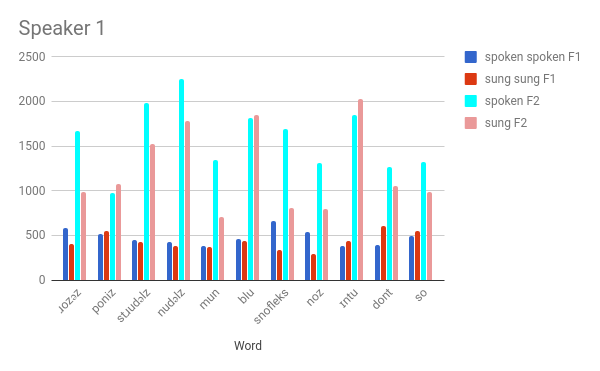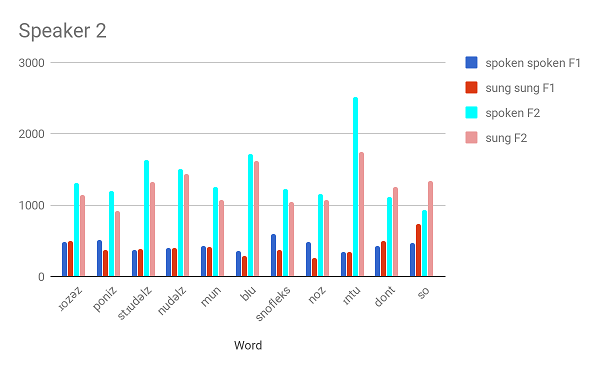Have you ever listened to a musician singing and then been surprised by their accent when they speak? Or heard someone talk and then been mystified by how differently they sing?
By Jonathan Lilley
Course: Language Sound Structures (Ling 3100)
Advisor: Prof. Rebecca Scarborough
LURA 2018
I have never heard The Beatles speaking and I would have never known they were British until someone told me. Iβve also heard some American singers sing with a British accent. But there surely must be some effect of oneβs speech and accent on singing style β right? That is exactly what this paper set out to discover (but on a small scale).
The focus of this paper is to see how the Southern Californian vowel shift affects vowels in singing, specifically church choir/classical style of singing. For those who do not know, the Southern Californian vowel shift is a vowel shift in which [u] and [o] are fronted, or pushed forwards, producing [Κ] or [y] (for [u] ) or [Ι΅] or [ΓΈ] (for [o]). For this paper, I collected three pairs of sound files of people raised in Southern California and trained in this church choir/classical singing style. Each pair was a person speaking and then singing a short passage that contained several instances of [u] and [o]. (The passage was βMy Favorite Thingsβ from The Sound of Music.) I then used Praat to record the first and second formants of each instance of [u] and [o] in the sound file, and then I compared each instance of [u] and [o] in each speaking sound file to its respective singing sound file. Since formants are proportional to backness and height of vowels, these comparisons illustrated any differences that existed in vowel frontness.
In this data, there was a variety of results. One of the singersβ vowels changed greatly, one changed little, and one changed somewhat (but not strongly either way). The first table, Speaker 1, shows a subject with great change in fronting between singing and speaking, as seen with the comparisons of the F2 values when compared between singing and speaking. The spoken vowels were fronted, as expected in Californian English, while the sung vowels were not.

Speaker 2, however, had very little difference between singing and speaking F2 values.

Why was there such variation? It could be the singersβ teachers, where in Southern California they came from, their age, or any number of other factors. Perhaps with more subjects I would have gotten more consistent results and larger trends. It is also possible that other singing styles are affected differently. Perhaps a vowel shift would affect pop singing styles more.
This study began to discover how the Southern Californian Vowel shift affects church choir/classical singing styles. Perhaps a future study will solve this mystery.
 onathan Lilley is a candidate for the concurrent BA/MA program in linguistics at ΒιΆΉΣ°ΤΊ, potentially focusing on NLP. He has a variety of hobbies, including Dungeons & Dragons, Aikido, and baking, and he is passionate about his studies in linguistics.
onathan Lilley is a candidate for the concurrent BA/MA program in linguistics at ΒιΆΉΣ°ΤΊ, potentially focusing on NLP. He has a variety of hobbies, including Dungeons & Dragons, Aikido, and baking, and he is passionate about his studies in linguistics.